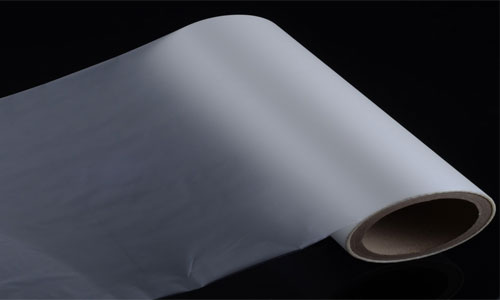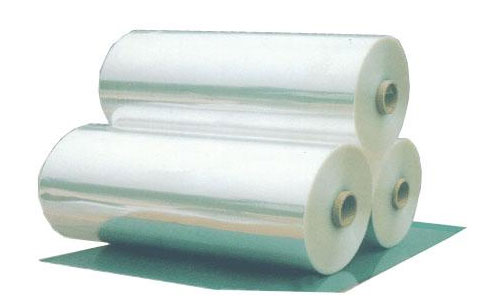Biaxially Oriented Polypropylene (BOPP) film and Polyethylene Terephthalate (PET) film are two widely used materials in the packaging industry due to their excellent properties and versatility. Let's explore these materials and their key characteristics:
BOPP Pre-coated Film
BOPP Film: 
BOPP film is a popular packaging material known for its clarity, transparency, and high tensile strength. Here are some important features of BOPP film:
a. Moisture Resistance: BOPP film offers excellent resistance to moisture, making it suitable for various applications that require moisture barrier properties.
b. Dimensional Stability: BOPP film has low thermal expansion, ensuring dimensional stability even under fluctuating temperature conditions. This property is crucial for packaging materials that need to maintain their shape and integrity.
c. Printability: BOPP film can be easily printed using different techniques such as flexography, gravure, and digital printing. Its smooth surface allows for vibrant and sharp print designs.
d. Versatility: BOPP film is available in various thicknesses, ranging from thin transparent films to thicker, more robust varieties. It can be used for flexible packaging, lamination, labels, adhesive tapes, and more.
BOPP pre-coated film is a composite film made from polypropylene film and EVA hot melt adhesive. The two can form a laminated structure, and because of its special construction, it has unique properties that can improve the shortcomings of ordinary polypropylene film and enhance the superior performance of polypropylene film.
1. Polypropylene is obtained by polymerizing petroleum from exhaust gas at high temperatures under the action of catalysts.
2. Properties of polypropylene film:
Advantages:
1) Lightweight with a density of 0.91g/cm2, it is one of the lightest plastic films that can float on water.
2) Better heat resistance than other thermoplastic plastics.
3) Good chemical stability, acid resistance, oil resistance, moisture resistance, and waterproof properties.
4) Non-toxic and odorless, recognized as the best material for food packaging worldwide.
5) High transparency and gloss, suitable for internal printing, good printing adaptability.
Disadvantages:
1) Poor oxygen barrier, susceptible to aging when exposed to sunlight.
2) Poor low-temperature resistance, becomes brittle at low temperatures.
3) Surface corona treatment (surface tension greater than or equal to 38mN/m) is required for good printability.
4) High static electricity. Anti-static agents need to be added during production if there is no static elimination device.
2. PET Pre-coated Film
PET Film: 
PET film, also known as polyester film, is a highly versatile material with excellent mechanical and thermal properties. Let's delve into some noteworthy characteristics of PET film:
a. Strength and Durability: PET film boasts exceptional tensile strength and toughness, making it resistant to tearing and puncturing. It can withstand challenging handling and shipping conditions, ensuring product protection.
b. Chemical Resistance: PET film demonstrates excellent resistance to chemicals, oils, and solvents. This property makes it suitable for applications that require resistance to harsh environments or reactive substances.
c. Optical Clarity: PET film has excellent optical clarity, allowing for a clear view of the packaged product. It is commonly used for displays, windows, and transparent packaging where visual appeal is essential.
d. Barrier Properties: PET film offers good barrier properties against oxygen and carbon dioxide, making it ideal for food packaging applications where extended shelf life is crucial.
e. Recycling: PET film is widely recyclable, contributing to sustainability efforts and reducing environmental impact.
Both BOPP film and PET film provide significant benefits in the packaging industry. While BOPP film excels in moisture resistance and printability, PET film offers superior strength, chemical resistance, and optical clarity. The choice between these materials depends on specific packaging requirements, such as barrier properties, aesthetics, and intended application.
PET pre-coated film is a composite film formed by laminating polyester film and EVA hot melt adhesive. It has excellent composite properties and can be laminated without affecting the excellent performance of PET pre-coated film.
PET, also known as polyethylene terephthalate, has the following excellent properties:
1) High mechanical strength, with a tensile strength about 5 to 10 times that of polyethylene. Therefore, 12mic PET film is widely used, and even 9mic ultra-thin PET film is in use. In addition, PET film has high stiffness and strong impact resistance.
2) Good heat resistance, with a melting point of 260℃ and a softening point of 230-240℃. Even under high-temperature conditions, the thermal shrinkage rate is very small when using biaxial stretching process, ensuring excellent dimensional stability. The performance is not affected by long-term heating at high temperatures.
3) Good oil resistance and chemical resistance, not easily dissolved. It has good resistance to acid corrosion and resistance to organic solvents and oils. However, it can degrade easily when exposed to strong alkalis.
4) Excellent gas barrier properties and good odor resistance.
5) Not as good as polyethylene and polypropylene in terms of water vapor barrier properties.
6) High transparency with light transmittance of over 90% and good gloss, suitable for printing.
7) Poor UV resistance.
Contact: Pamela
Phone: +86 189 6365 3253
E-mail: info@industryprocess.com
Whatsapp:+86 189 6365 3253
Add: Yajing Industrial Park, No. 59 Shuangjing Street, Weiting Town, Suzhou Industrial Park
We chat
